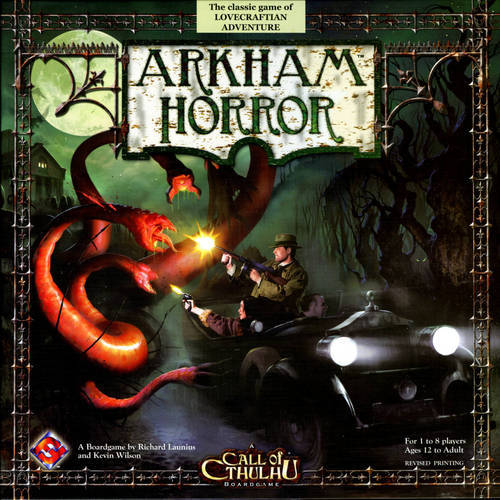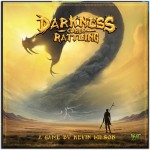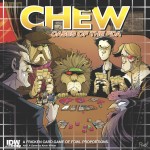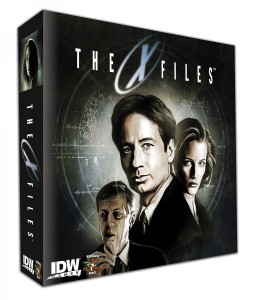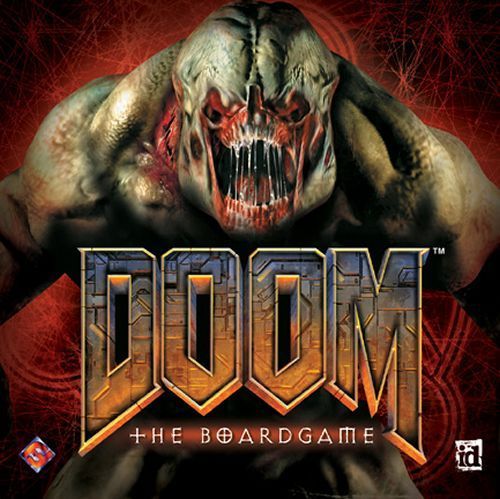To quote Greg Costikyan: “A bibliography is a list of the books you’ve written; a discography is a list of the music you’ve recorded; and a ludography is a list of the games you’ve designed.”
Arkham Horror 2nd Edition
The most successful game I’ve ever worked on by far, Arkham Horror very nearly didn’t have my name on it at all. I had met Richard Launius at the Origins Game Fair, where he was running demos of his amazing hand-painted Arkham Horror game. Richard was already in talks with another publisher to do a reprint, but I gave him my business card anyway, as I had a good feeling about the game. Well, Arkham Horror did, of course, wind up with FFG, and I was tapped to work on it, since I had been the one to push for it. Chris wanted the game modernized, so I buckled down and got to redesigning. Richard was never anything but encouraging (which will be no surprise to anyone that knows him), and in the end, I wound up changing a lot of stuff, including creating a primitive AI for the game (the mythos deck) and adding in the skill slider mechanic. Towards the end of the project, I looked at all the work I’d done, took a deep breath, and made a somewhat timid and embarrassed phone call to Richard, asking if he would mind if my name was added to the cover in light of the redesign work I’d done. Proving once again that he is both a scholar and a gentleman, Richard agreed with an easy “Sure!”, and I received the cover credit that has turned out to be the most important in my career so far.
- Publisher: Fantasy Flight Games
- Expansions: I mostly worked on the first three large expansions: Dunwich Horror, Kingsport Horror, and Innsmouth Horror, though I was consulted on the small expansions and Miskatonic Horror as well. There are lots of other supplies available for Arkham Horror, such as custom dice, and pre-painted miniatures, etc…
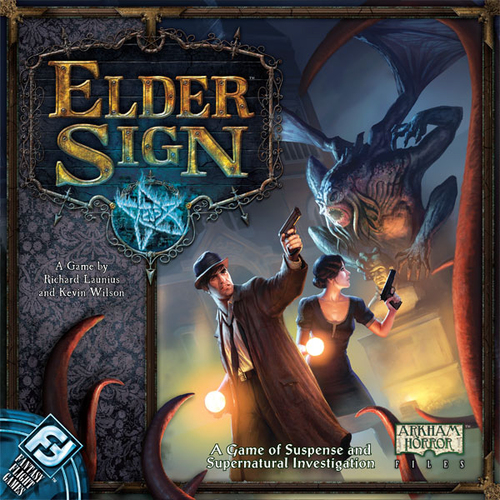
Elder Sign
A lighter, dice-based follow-up to Arkham Horror, Elder Sign was originally shown to me by Richard Launius at Gencon. About ten of us at the company then stayed up half the night playing it, and I knew it was a game FFG needed to publish. As with Arkham Horror, I spent a fair amount of time working on components, and added in the monsters, along with tweaking a number of mechanics. And as always, it was a great pleasure to work with Richard.
- Publisher: Fantasy Flight Games
- Expansions: Unseen Forces, and there’s a very good digital adaptation of Elder Sign out that I designed two expansions for, which was an interesting design experience all its own.
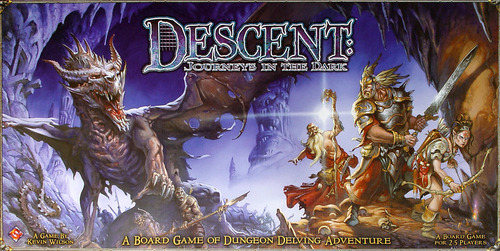
Descent: Journeys in the Dark
Man, just look at the size of that box. You could live in that thing. Descent was my only coffin-box game at FFG, and I will never, ever forget the experience of opening the sample from the manufacturer for the first time. I just ran my hands through all the toys in there, and I had a grin that lasted for days. Having gotten my start in gaming with Dungeons & Dragons, Descent was a love letter to that game in many ways. It reused several design elements from Doom, including the color-coded dice. It was a fantastically-successful design, and one that I’m still extremely proud of. Descent, along with Arkham Horror, dominated my next years at FFG, and continues to be one of the games that gamers associate with me.
- Publisher: Fantasy Flight Games
- Expansions: Descent: The Well of Darkness, Descent: the Altar of Despair, Descent: the Tomb of Ice (mostly designed by Jason Steinhurst), Descent: the Road to Legend, and Descent: the Sea of Blood.
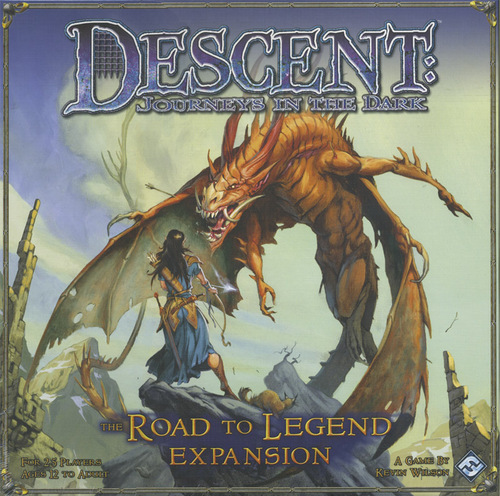
Descent: the Road to Legend
“Hang on a minute,” I know you’re saying, “This is an expansion, not a complete game!” Well, Road to Legend is special. It was an opportunity to revisit Descent and redesign it to bridge the gap between board games and role-playing games in a way that had seldom, if ever, been seen before. It split Descent into bite-sized sessions, while at the same time allowing for truly epic campaigns to play out over the course of up to a year or more. Like another game I worked on that year, it was wild and ambitious, and it took me six solid months to create, even with Rob Kouba helping me design dungeons. Road to Legend remains one of the designs that I’m proudest of to this day.
- Publisher: Fantasy Flight Games

Android
Some people say that Android was a failure, while others claim that it was a triumph. Personally, I think it’s the closest I’ve gotten in my career to creating a work of art. Android was a very unusual game, and used almost entirely unfamiliar game mechanics. It was dense, long, and fairly impenetrable to new players, but it delivered a story and a setting that was compelling enough to spin off into multiple other games and novels. With Android, I took chances, I went for the gusto. It was an intensely personal, intensely private creation that I’m very proud of in a lot of ways. That said, lots of people helped make Android a reality. Christian T. Petersen, the CEO of FFG took a huge gamble on the game. Dan Clark helped create many of the early stories and ideas for the game, and Zoe Robinson went above and beyond the call of duty as art director to assemble a talented team of artists to bring the visuals for New Angeles to life, including Julie Dillon, Henning Ludvigsen, Stefan Morrell, Aaron Panagos, and Didier Poli (website unknown). Andrew Navaro knocked the graphic design out of the park, and there it was. I’ll just say this. If Android was a failure, then I’d rather have a memorable failure than a quickly-forgotten success.
- Publisher: Fantasy Flight Games
- Expansions: None, but there are several other games in the Android setting, including the wildly successful Android: Netrunner, not to mention several tie-in novels as well!
Darkness Comes Rattling
A cooperative game for 1-6 players that plays in 1-2 hours, Darkness Comes Rattling is about a group of warriors who must journey to save the sun, which has been swallowed by the giant snake, Darkness. If they fall in battle, they will continue to assist the other warriors as a spirit until they can be returned to life, but should they fail in their quest, the world will be doomed. Just check out that cover art – so good!
- Publisher: Wyrd Miniatures
- Expansions: None
Chew: Cases of the FDA
Based on the bizarrely brilliant CHEW comic book written by John Layman (who did all the flavor text for the game) and drawn by Rob Guillory (who did all the art for the game), this weird and silly card game is suitable for consumption with beer and pretzels, or maybe some chicken wings. Of course, if you’re cibopathic, maybe you should stick to beets when you play…
- Publisher: IDW Games
- Expansions: None
X-Files
As a long-time fan of the X-Files, this was a real treat for me to get to design. The game is for 2-5 players and takes about 60-90 minutes to play. One of the players plays the Smoking Man, while the other players take on the roles of various X-Files agents and oppose him as a team. It’s a lighter game than my usual fare, where the focus is on the mindgames between the two sides. IDW Games even brought in Dean Haglund from the Lone Gunmen to help announce the game at the GAMA Trade Show. How cool is that?
- Publisher: IDW Games
- Expansions: X-Files: Trust No One
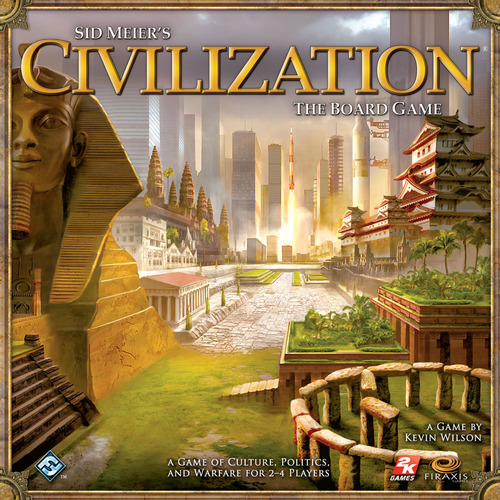
Sid Meier’s Civilization: the Board Game
Civilization was a lot of fun to design. Firaxis was a great licensor to work with, and at one point Steve Horvath (head of marketing at FFG) and I flew out to Baltimore to demo the game to them. They were incredibly excited by the game. We were in a glass meeting room as we played, and employees would come by and press their faces up against the glass to see how the game was going. Overall, this design was notable for the fact that I had to balance four different major victory conditions against each other, and it features what I personally consider to be the most elegant technology tree on the market.
- Publisher: Fantasy Flight Games
- Expansions: Sid Meier’s Civilization: the Board Game: Fame and Fortune and Sid Meier’s Civilization: the Board Game: Wisdom and Warfare.
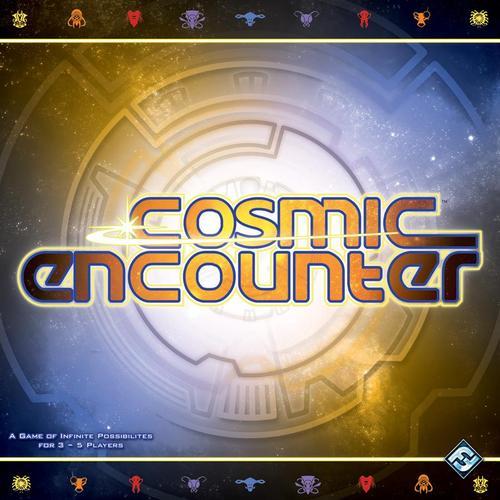
Cosmic Encounter
Cosmic Encounter was a game that I hated on my first play, but which grew to be my favorite game of all time. So, when I got tapped to develop a new edition of it, I knew that I had to do it right. I wound up putting a ton of work into this project. Everything from figuring out how best to design the spaceship tokens, to picking a good mix of aliens, to solidifying the interactions and wording in the game, to adjusting the card ratios in the deck, to simply putting the rules text on the encounter cards. Peter Olotka and I argued about some of it, but in the end, I think we were both very pleased with how the new edition came out, and I count him among my friends these days.
- Publisher: Fantasy Flight Games
- Expansions: Cosmic Incursion, Cosmic Conflict, and Cosmic Alliance.

Wiz-war
After getting to work on Cosmic Encounter, I was privileged to be tapped to work on the other most significant influence on the design of Magic: the Gathering, Tom Jolly’s Wiz-war. Having played Wiz-war for many years prior to that with my Wednesday night gaming group, I was delighted to be able to work on the new edition, and made a few changes and production choices that I think helped keep the design modern and consistent from one play to the next.
- Publisher: Fantasy Flight Games
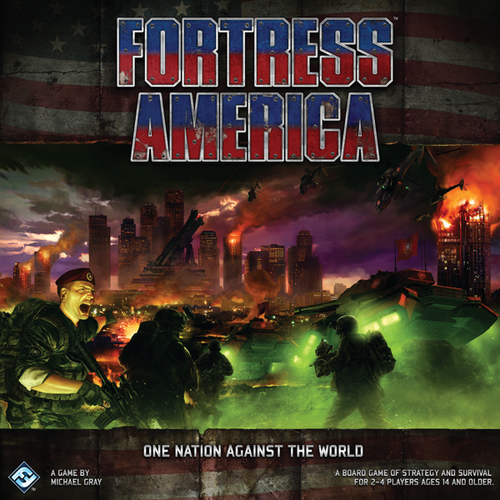
Fortress America
Another powerhouse of a design that I was glad to get the chance to develop, Fortress America is one of Michael Gray’s greatest games. Michael himself is one of the nicest guys in the industry, and I wanted to make sure his game was well taken care of when FFG did the reprint. Good development is sometimes about knowing when to leave well-enough alone, and I didn’t make too many design changes to the new edition, instead working to help create the highest-quality production we could manage. After seeing it, Michael said that he was extremely happy with the new edition, which was the highest praise I could have hoped to get.
- Publisher: Fantasy Flight Games
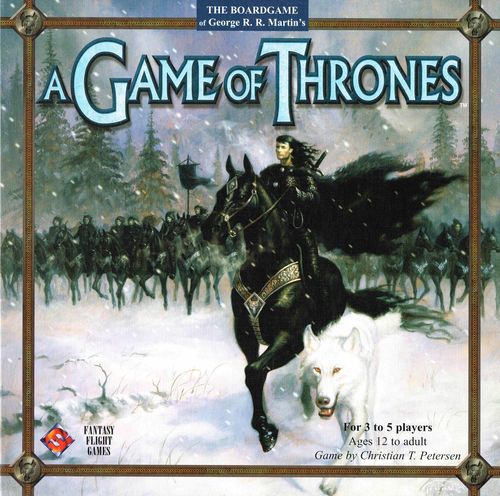
A Game of Thrones: the Board Game
I was the developer on this project as opposed to the designer, but I did a lot of work on it along with Eric Lang that I’m still proud of. This was when I first became a strong proponent of “hybrid” design, trying to combine the best of the European and American schools of game design. Originally, the game was manufactured in Germany, and I still remember the fantastic quality – and the exorbitant price. It was really a caviar kind of game, and had a sense of class to it that you don’t often see.
- Publisher: Fantasy Flight Games
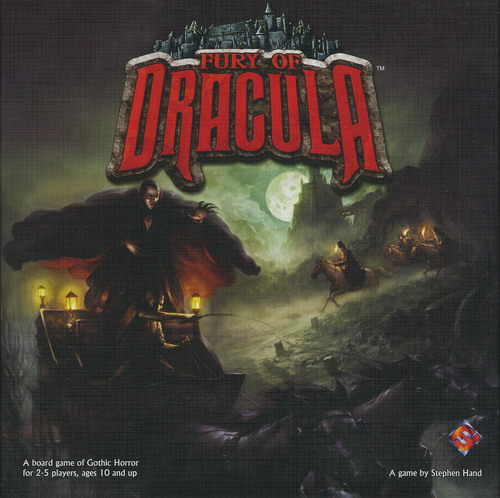
Fury of Dracula 2nd Edition
Again, I was a developer rather than designer on this game, but I did a significant amount of redesign work, most of which was aimed at making the play length of the game as well as the play experience in general more consistent. I also worked with Dan Clark (who I later worked again with on Android) to write flavor text for the cards in the style of Bram Stoker. Overall, I was pretty proud of this game, and hopefully Stephen Hand is happy with this edition, as I was never able to contact him during the redesign process.
- Publisher: Fantasy Flight Games
Doom: the Board Game
Doom was my third licensed game, and I was largely getting the hang of it by this point. An early design that used different dice for each weapon was scrapped for cost reasons, and that’s when I came up with the color-coded dice that would reappear in Descent. Doom owes a debt of thanks to Space Hulk, mostly for the modular board design rather than the game play. This game is also notable for two other reasons. First, it’s my first game with plastic miniatures (sculpted by the truly professional and talented Bob Naismith). Second, customs held the game up, as apparently the shipping boxes were just labeled “DOOM”. I can’t really say that I blame them for that one.
- Publisher: Fantasy Flight Games
- Expansions: Doom: the Board Game Expansion Set.
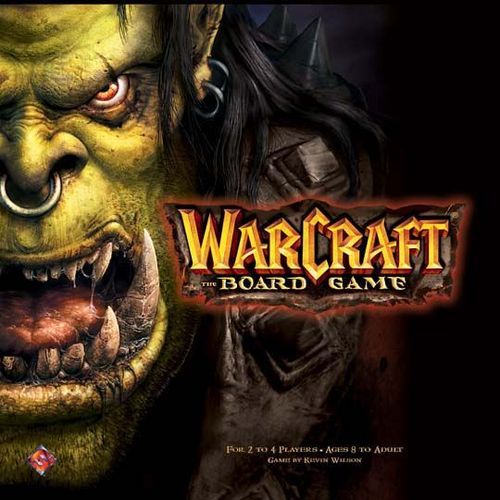
Warcraft: the Board Game
This was my first taste of licensed game design, and was full of lessons for me. It went on to be extremely popular for Fantasy Flight Games thanks to its strong license and language-less game components. The sales department often remarked to me what a juggernaut this game was, and years later, I would still occasionally get to marvel over the latest foreign language edition of the game.
- Publisher: Fantasy Flight Games
- Expansions: Warcraft: the Board Game Expansion Set.
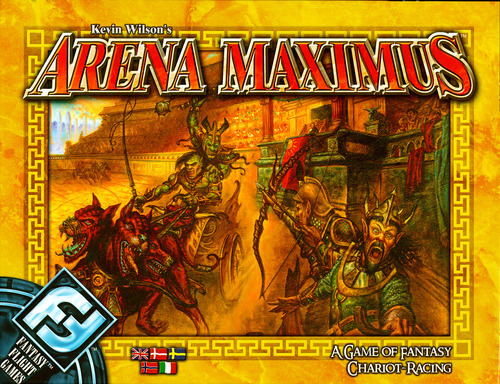
Arena Maximus
This game was actually designed because FFG had the cover art laying around from an earlier attempt at a game of the same name. Of my early board games, this is probably my favorite design. I’m particularly fond of the way that going faster means that you have fewer cards to steer and fight the other chariot drivers with.
- Publisher: Fantasy Flight Games
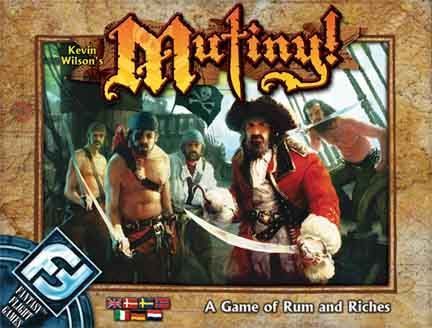
Mutiny!
Another of my early board games, Mutiny! was greatly inspired by Bruno Faidutti’s whimsical Fist of Dragonstones (specifically the fairy gold in the game). When I made the prototype, I used pirate art from the extremely talented Don Maitz. As it turns out, we were able to get second printing rights for that art and used it in the game!
- Publisher: Fantasy Flight Games

Magdar
My first board game, Magdar was originally designed as an asteroid mining game, but I found out that FFG had already done a game with that theme and went with a “dwarves and balrog” theme instead. Magdar was designed around the idea that the board would destroy itself as you played. The prototype of this game is what got me my transfer out of role-playing games into the board game department, incidentally.
- Publisher: Fantasy Flight Games
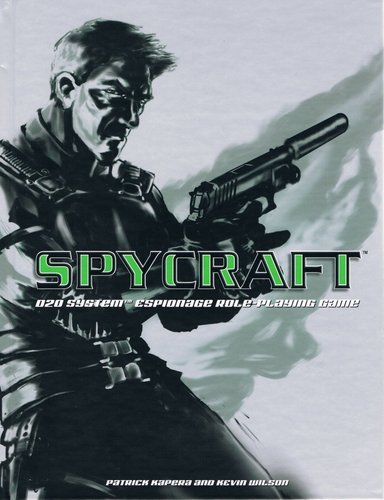
Spycraft RPG
In my first leadership role in the industry, I was the mechanics lead for Spycraft 1st edition, along with Patrick Kapera (now of Crafty Games) who was the overall product lead. Patrick and I spent many hours toiling away on it, and I was able to introduce a number of refinements to the d20 system that I was very pleased with, including core class abilities that players only received at 1st level, a fun action dice system, and a streamlined turn sequence. Spycraft was one of the more successful d20 product lines to emerge, and continues to be successful for Patrick to this day. I was touched to note that the Spycraft 2.0 team used “Kevin” as the player in all the play examples.
- Publisher: Was Alderac Entertainment Group, now Crafty Games
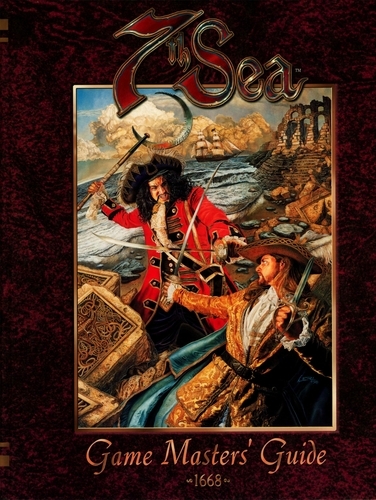
7th Sea RPG
For my first professional game design, I worked under John Wick (also of Legends of the Five Rings fame) at Alderac Entertainment Group on the core books for the 7th Sea RPG. Other major contributors to the core books included two talented gentlemen named Patrick Kapera (now of Crafty Games) and jim pinto, both of whom were indispensable to the project. My favorite characters that I got to design were — Captain Reis, who was sort of a cross between Captain Hook and the Dread Pirate Roberts, and Philip Gosse, the leader of Gosse’s Gentlemen, a particularly honorable crew of pirates. The 7th Sea RPG went on to win an Origins award that year, and I got to go up and give an acceptance speech, which involved reading a fortune cookie fortune I’d gotten that day. Then the 7th Sea CCG also won an Origins award and I had to go up and give another speech, which I was unprepared for. I spent the rest of the night in my hotel room calming my stomach down after a massive attack of nerves. Public speaking doesn’t bother me nearly as much these days, but back then, it terrified me. On another personal aside, one of my good friends met his future wife while playing in a 7th Sea campaign!
- Publisher: Alderac Entertainment Group
- Expansions: Too many to list, but including the Eisen Nation Book, the Montaigne Nation Book, and the massive Freiburg boxed set (with Rob Vaux, who now writes some very nice movie reviews).
